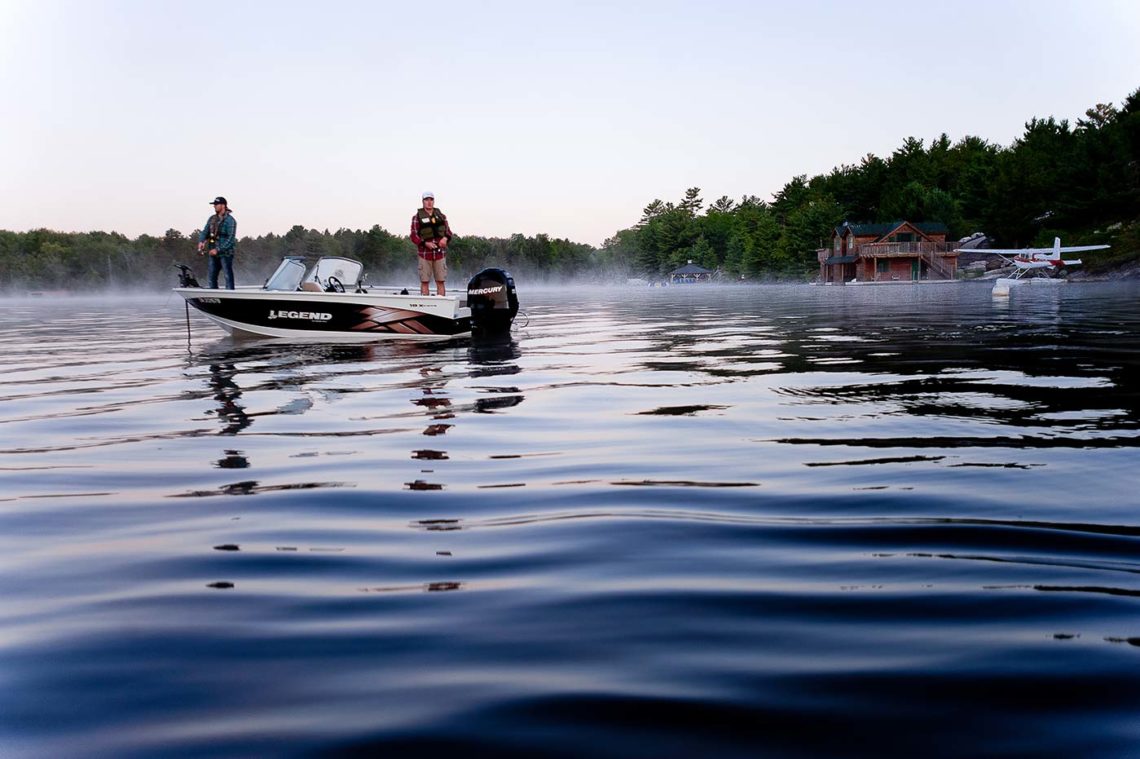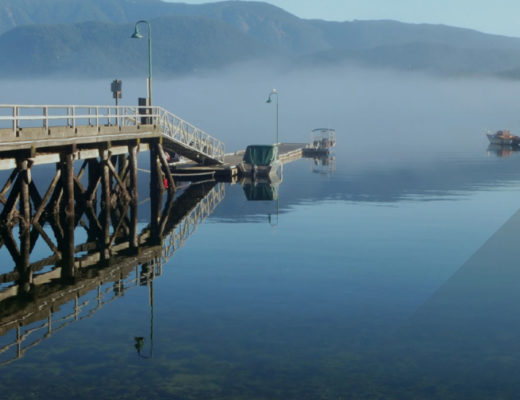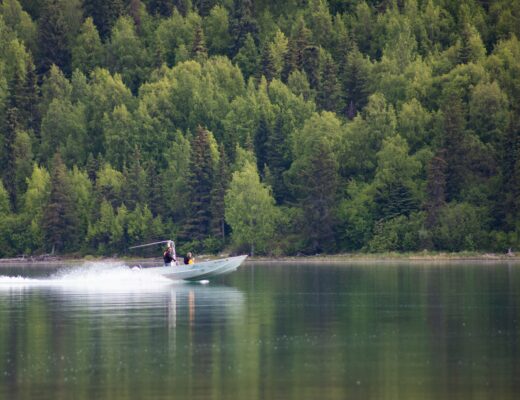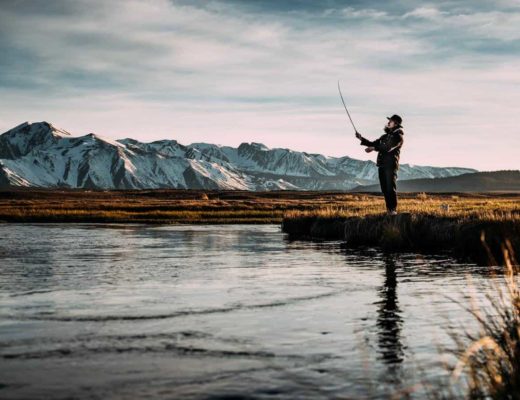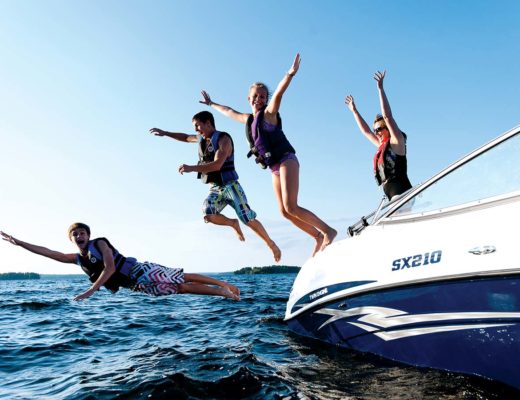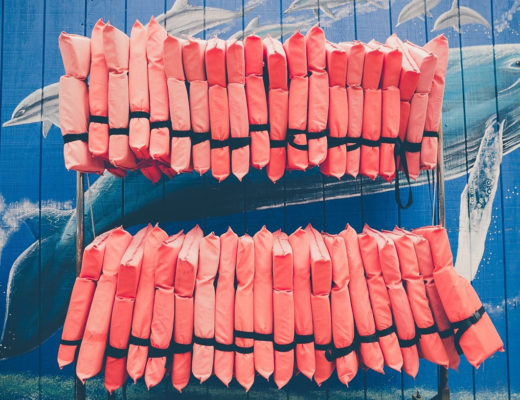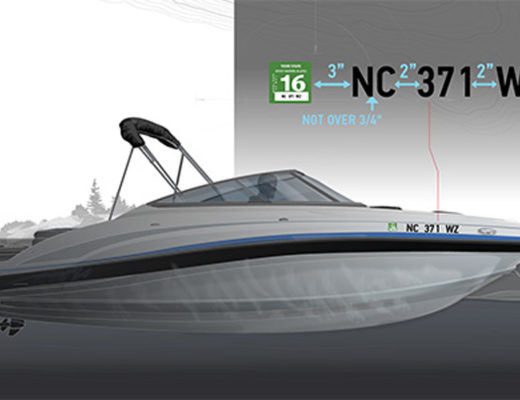There are very few things as relaxing, calming, and freeing as a day with a fishing rod. Whether you’re a competitive fisher, a camaraderie fisher, or a solo fisher, you know the benefit and beauty of having a fishing boat that you love to take out on the water. While going out on a buddy’s boat is great, there’s nothing quite like having your own.
However, the process of first-time boat buying can seem kind of stressful. With our guide to first-time fishing boat buying, it doesn’t have to be.
From the kind of water you’re fishing to the speed you’re looking for, here are four steps and things to consider when buying a fishing boat for the first time.
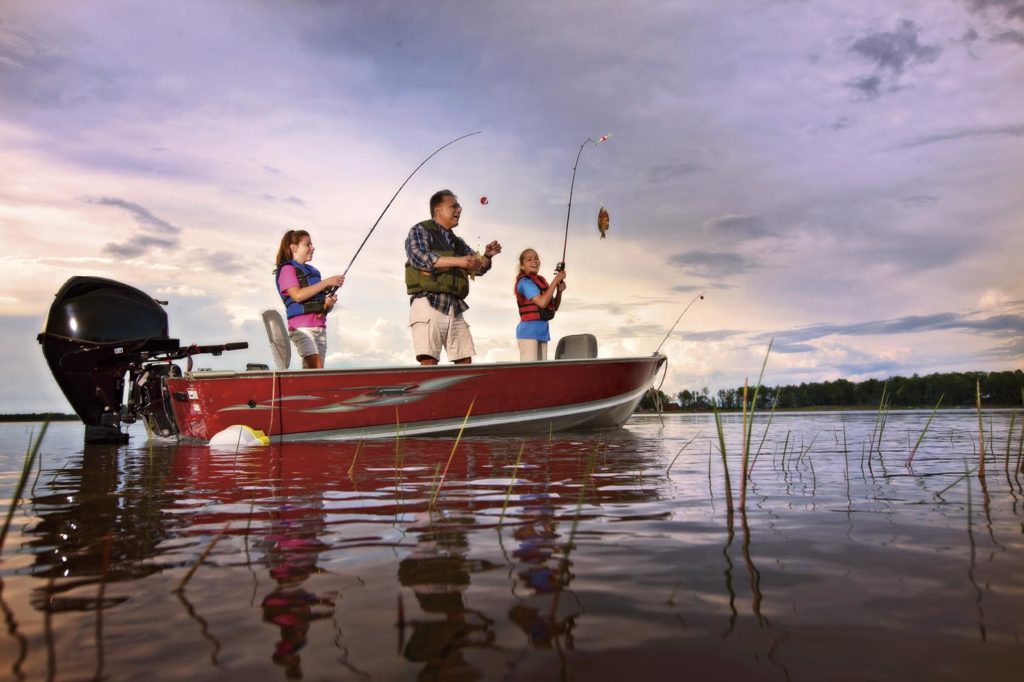
Step One: Dig Deep Into Your Fishing Habits
The most important step to finding a fishing boat you love is finding one customized to your needs and preferences while fishing.
With the Google search bar and a trusted friend at your side, answer these questions to narrow it down:
- Are you fishing in shallow water, or are your favorite places to fish a little deeper? How about saltwater versus freshwater?
- How much storage do you want in your boat? (Think: built-in tackle boxes, rod storage, etc).
- Are you fishing competitively or just for leisure? (This can impact the need for a live well, and it also has a significant impact on speed. Competitive fishers need speed to snag the best spot to fish).
- What type of boat have you enjoyed fishing from in the past?
- What size and capacity are you looking for in your live wells and bait wells?
- Will your boating needs be the same in a couple of years as they are now? (You’ll want a boat that lasts a while, so give yourself room to grow.)
Once you’ve figured out the things you want in your fishing boat, you can create a list of criteria you need when buying one.
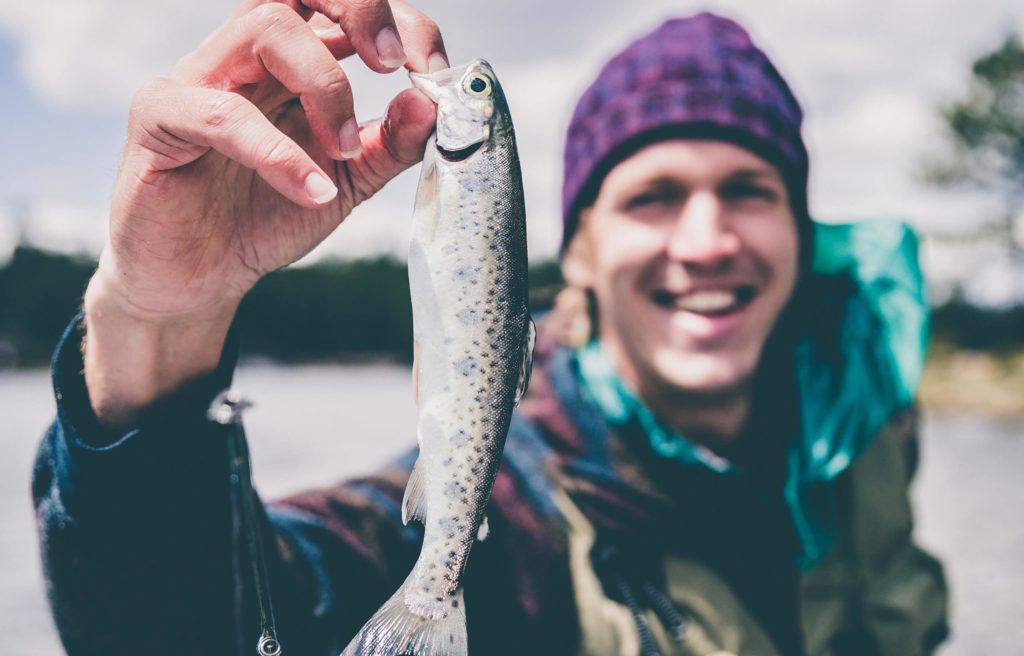
Step Two: Research, Shop, and Decide
With your list of criteria in hand and a budget in mind, you’ll be able to start looking for a boat that checks off your desires and needs when it comes to your fishing boat.
From online retailers to local sellers, dig through listings and be picky! Whether it’s making sure that listing pictures are original or verifying buyers, overturn every stone you can during your search.
While you might not be able to take a boat you’re looking at on an actual fishing expedition, take it out on a test ride to make sure you like the boat’s speed, feel, and style. Think as practically as you can when it comes to your needs while fishing, and make sure that the boat checks every box.
From anchoring to storage to speed, don’t settle for a boat that doesn’t fit your criteria checklist. Even if you have to search a little longer, you’ll be able to find a boat that you like.
BOATsmart! ‘s Top Picks for Great Fishing Boats
What are the best fishing boats to consider? We’ve got some ideas for you!
- Skiffs: Also known as flats boats, skiffs only go a few inches into the water, which makes them perfect for fishing in shallower water. They’re quiet, making them a great fishing choice, but they don’t have much storage space.
- Bay boats: Bay boats are great in relatively shallow water, but can also manage deeper and choppier waters for more intense fishing trips. They also have quite a bit of storage space but aren’t going to go too far offshore.
- Center console: Boats with a center console offer more fishing opportunities — i.e., you can fish either inshore, nearshore, or offshore, plus you have more control and visibility since you operate the boat from the center — and they’re not too big to be hard to move and store.
- Inflatable: If you love fishing in rough waters, an inflatable boat is your best fishing boat option. It’s not the most relaxing of boat rides, but it is a great adventure.
- Bass boat: Bass boats are a high-tech choice for freshwater fishers, though they can often be more expensive than other fishing boat choices. They’re fast and comfortable but don’t do well with large fishing groups.
- Fish-and-ski: Fish-and-ski boats are a super versatile option for anglers who enjoy fun times on the water with family and friends. They offer fishing capabilities along with speed, making them a great choice.
- Pontoon boats: Pontoon boats include lots of space and a highly relaxing environment for fishing, but they’re not the choice for you if you’re looking for a super maneuverable boat or one that will do well offshore.
Any of these types of boats are great options to consider when buying your first boat for fishing adventures!
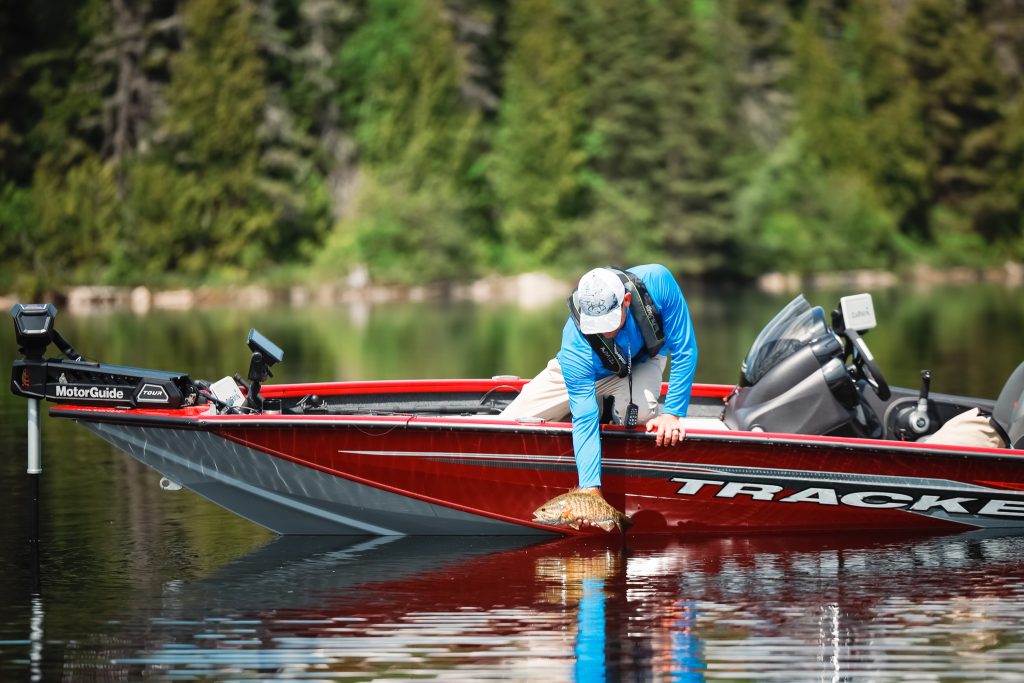
Step Three: Prep Your Boat for a Legal Fishing Expedition
Once you’ve found a boat that you like (yay!), it’s time to close the sale and get everything in order. By going through a reputable seller or someone local that you trust, you’re already halfway there. However, do your due diligence by ensuring you have the title and alerting the right departments to your new ownership.
Before you take the fishing boat out on the water, make sure you’re licensed and legal to do so. Many states require a boater safety course and certification, and BOATsmart! can help you to make sure that you’re prepped and ready to fish your heart out.
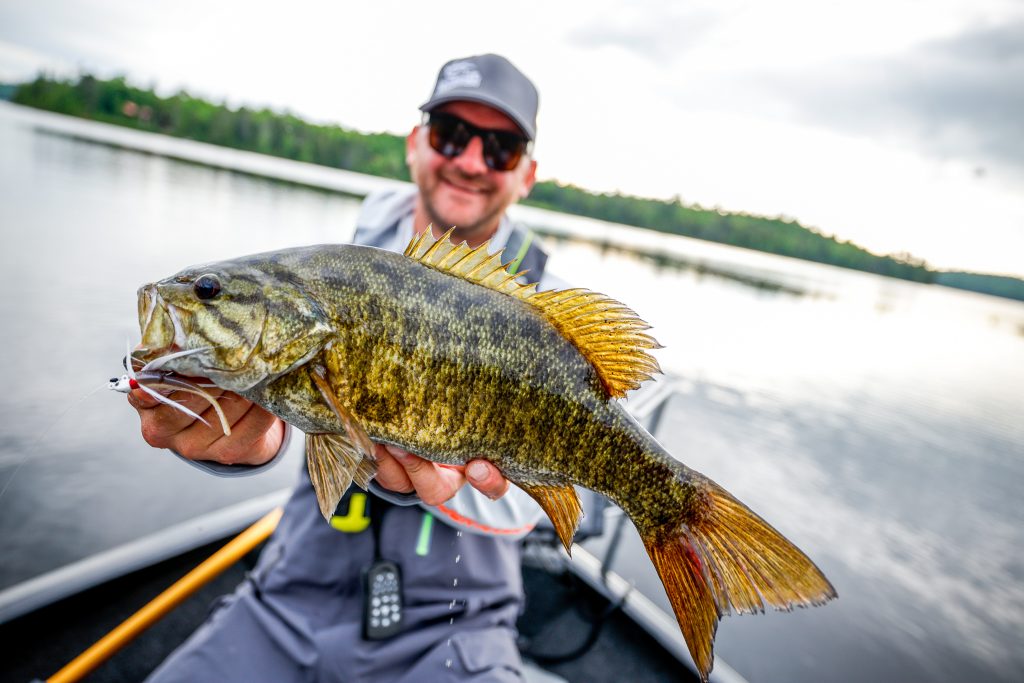
Step Four: Have Fun After Buying a Fishing Boat
The papers are signed, the money’s been exchanged and the fishing boat is finally yours! So, after buying your first boat, load it up with snacks, drinks, and fishing rods and set out on your first of (many) expeditions in your new fishing boat.
At BOATsmart!, we’re always around to help with your boater safety education as well as answer any questions you have about boating and water fun. We hope this guide has been helpful and gets you on your way to owning your first boat!
If you boat in Canada, get started with our courses for Canadians. Before boating in the U.S., choose the course for your state and start learning.
Originally published August 2020. Content most recently reviewed and updated for relevancy and accuracy September 26, 2024.
